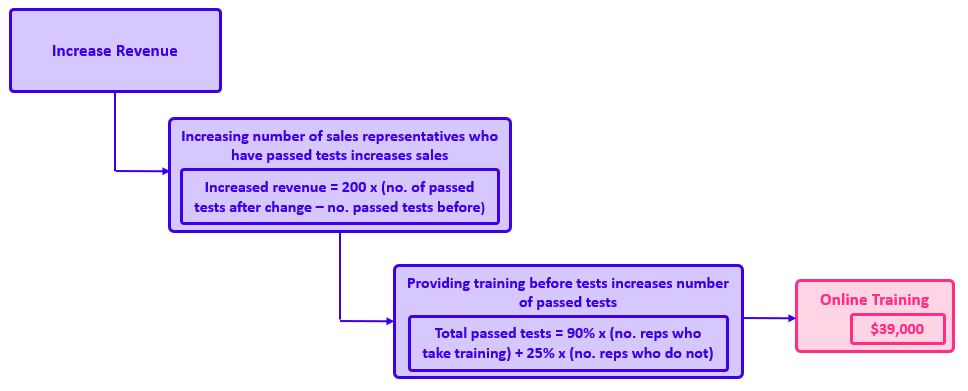Ensure Project Success Using Requirements Modeling Language
In any project, whether it’s software development, product design, or business process improvement, clear and well-understood requirements are crucial for success. However, gathering and documenting requirements is a complex and challenging task. This is where Requirements Modeling Language (RML) comes into play. RML is a systematic approach that helps stakeholders visualize and define project requirements in a structured and comprehensive manner. This article outlines the significance of visually modeling requirements and its pivotal role in ensuring a comprehensive understanding of project requirements among all stakeholders.
The Power of Visual Models
Visually modeling requirements is a technique used to represent, analyze, and communicate requirements in a visual and structured way. It involves creating models (or diagrams) that capture different aspects of the requirements, making them easier to understand and validate. RML provides a common language for stakeholders to discuss and refine requirements throughout the project lifecycle. Let’s take a look at a couple of examples.
One of my favorite models to create at the beginning of any project is the Business Objectives Model (BOM). A BOM is an RML model depicting the goals and objectives of a project. Its primary function is to help stakeholders align their understanding of the business objectives and how they relate to the project requirements. The BOM identifies the business problems, business objectives, product concepts, and success metrics. By visualizing this information, the BOM facilitates effective communication, collaboration, and decision-making among project participants.

Once you have your BOM in place, create an Objective Chain to visually show a measurable connection between features and Business Objectives. As multiple features often align with different Business Objectives, and each feature may address multiple objectives, this framework aids in assessing the comparative worth of individual features or feature sets. In situations where multiple solutions exist or prioritization is required (such as cutting certain features), we find this model particularly valuable in identifying features that deliver the highest value. In fact, by eliminating features that lack essential value, we provide substantial benefits to our stakeholders.

Imagine relying solely on words to communicate all of the information found in the BOM and Objective Chain above. These RML examples demonstrate the power of requirements modeling. By sharing complex information in a clear and comprehensible way, modeling provides significant benefits to project stakeholders leading them to make informed, value-driven decisions.
Provide Clarity and Encourage Collaboration
Visual modeling brings clarity to project requirements by transforming complex textual information into visual representations. These models enable stakeholders to better grasp and comprehend the requirements, reducing ambiguity and misinterpretation. As a result, everyone involved has a shared understanding of what needs to be achieved, minimizing the risk of misunderstandings and project failures.
By using visual models, project teams can have more productive discussions, address conflicts, and reach consensus on critical requirements. Requirements modeling provides a visual language that transcends the barriers of technical jargon. It allows stakeholders from different backgrounds and expertise to communicate effectively, ensuring that ideas and requirements are conveyed accurately.
Models can be analyzed and validated to ensure their completeness, consistency, and feasibility. By examining the models, stakeholders can identify potential conflicts, gaps, or missing requirements early in the project lifecycle. This proactive approach minimizes the need for costly rework and changes down the line, saving time and resources.
Requirements modeling encourages active participation and collaboration among stakeholders. It provides a platform for stakeholders to contribute their insights, identify dependencies, and provide feedback on the requirements. This inclusive approach fosters a sense of ownership and ensures that diverse perspectives are considered, leading to a more robust and comprehensive set of requirements.
Foster Understanding By Visually Modeling Requirements
Visually modeling requirements ensures that the requirements for a project are well understood by everyone involved through several key techniques:
Visual Representation: Visual models created through requirements modeling offers a clear and concise representation of project requirements. These models act as visual aids, making it easier for stakeholders to absorb and retain information. They provide a tangible reference point for discussions, enabling stakeholders to align their understanding and identify potential gaps or inconsistencies.
Iterative Refinement: Requirements modeling is an iterative process that allows stakeholders to refine and iterate on the requirements. As models are reviewed and discussed, stakeholders can provide feedback, ask clarifying questions, and suggest modifications. This iterative approach helps uncover hidden assumptions, resolve conflicts, and improve the overall quality of the requirements.
Traceability and Accountability: Requirements models establish traceability between different elements of the project, such as business objectives, user requirements, and system functionalities. This traceability ensures that each requirement is linked to its origin and purpose, making it easier to track changes, assess impacts, and maintain accountability throughout the project lifecycle.
By utilizing requirements modeling techniques, project teams can overcome the challenges of requirement ambiguity, lack of understanding, and misalignment. With a shared understanding of requirements, stakeholders can collaborate more effectively, make informed decisions, and deliver successful projects.
Leverage Requirements Modeling for Project Success
Requirements modeling plays a vital role in ensuring that everyone involved has a clear understanding of the project requirements. By employing visual representations, requirements modeling cultivates clarity, amplifies communication, refines analysis, and nurtures collaboration among stakeholders. By continuously improving and maintaining a clear record, requirements modeling lays the groundwork for achieving project objectives. As projects become increasingly complex, investing time and effort in requirements modeling proves to be a worthwhile endeavor.
Successful requirements modeling also relies on using appropriate tools and techniques. Download our RML Quick Reference Guide to learn more. And, go to our Free RML Templates page to download our full suite of visual model templates.




